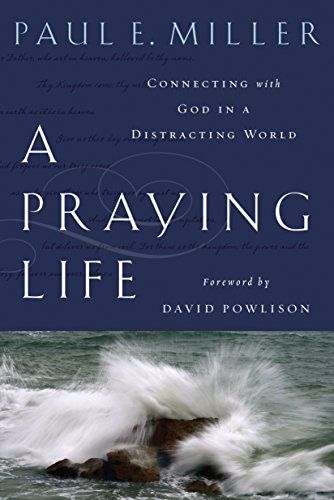Prayer Cards

I’ve read books on prayer, but none of them have helped me as much as A Praying Life by Paul Miller. And no book has given me more practical advice, particularly in the last section of the book called “Praying in Real Life.”

According to Miller, most people write their schedules electronically or on paper, but few write their prayer requests. “The bottom line is we don’t write down our prayer requests because we don’t take prayer seriously. We don’t think it works.”
Miller suggests keeping prayer cards: three-by-five cards to pray “for loved ones and friends, for non-Christians I’m building relationships with, for my church and its leaders, for missionaries, for my work and my co-workers, for character change in my own life, and for my dreams.” Miller prefers this system to a prayer list:
A prayer card has several advantages over a list. A list is often a series of scattered prayer requests, while a prayer card focuses on one person or area of your life. It allows you to look at the person or situation from multiple perspectives. Over time, it helps you reflect on what God does in response to your prayers. You begin to see patterns, and slowly a story unfolds that you find yourself drawn into. A list tends to be more mechanical. We can get overwhelmed with the number of things to pray for. Because items on a list are so disconnected, it is hard to maintain the discipline to pray. When I pray, I have only one card in front of me at a time, which helps me concentrate on that person or need.
“Ask him,” Miller urges. “Tell him what you want. Get dirty. Write out your prayer requests; don’t mindlessly drift through life on the American narcotic of busyness.” Prayer is how Miller manages his life, and prayer cards are a big part of how he does that.
Since finishing A Praying Life, I’ve ordered cards from Levenger, and I’ve set them up using the following categories, and number of cards I pray through a day:

- family (4-10)
- people who are suffering (1-3)
- unbelievers (1)
- friends (1)
- pastors, missionaries, and ministries (1)
- supporters (1)
- world/cultural issues (1-3)
- church (3)
- church members (2)
- areas of repentance and growth (3-5)
- hopes and big dreams (3-5)
If you would prefer to do this electronically, an app like Prayer Mate would do the same thing.
It’s such a simple thing, but it’s revolutionized my prayer life. I’m grateful for Miller’s practical advice, and I’d encourage you to try following it too. A system really does help.






